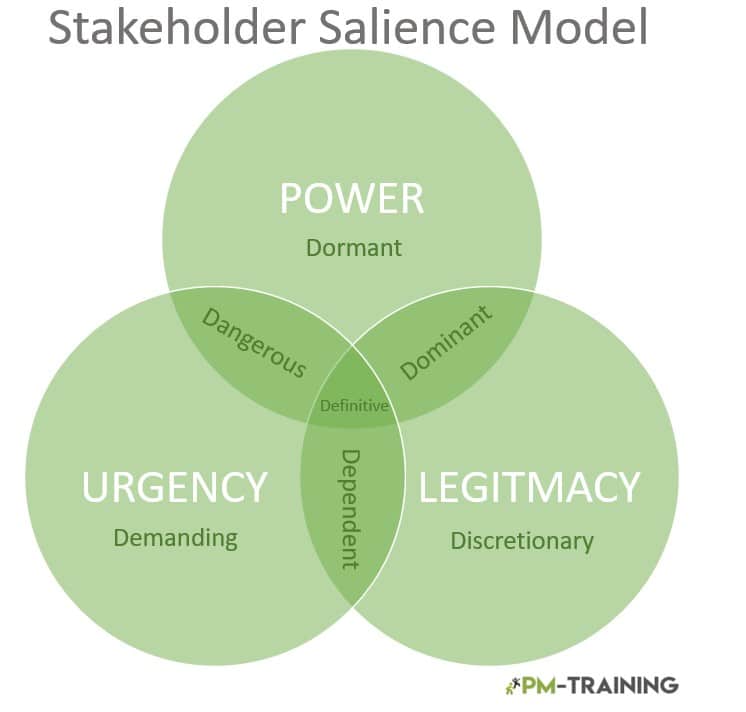
The salience model is a cognitive model that explains how stakeholders prioritize and process information. The salience model (Mitchell 1997) posits that stakeholders focus on the most salient or essential information at the time.
This can be due to various factors, including relevance to the stakeholder’s goals or concerns, emotional intensity, and perceptual clarity. It has also been found to help understand various behaviors, including how people filter information, prioritize tasks, and respond to distractions.
Having a salience model can help project managers predict why some stakeholders may behave in seemingly irrational ways, such as why someone might focus on a minor detail that is irrelevant to their overall goal.
The stakeholder salience model is one of the most important models in Project Management. It identifies, assesses, and ranks stakeholders based on their importance to the project. Its main attributes are:
- Power: The power of a stakeholder is determined by their ability to affect the project.
- Urgency: The urgency of a stakeholder is determined by their need for information or action.
- Legitimacy: The legitimacy of a stakeholder is determined by their belief in the project and in its vision.
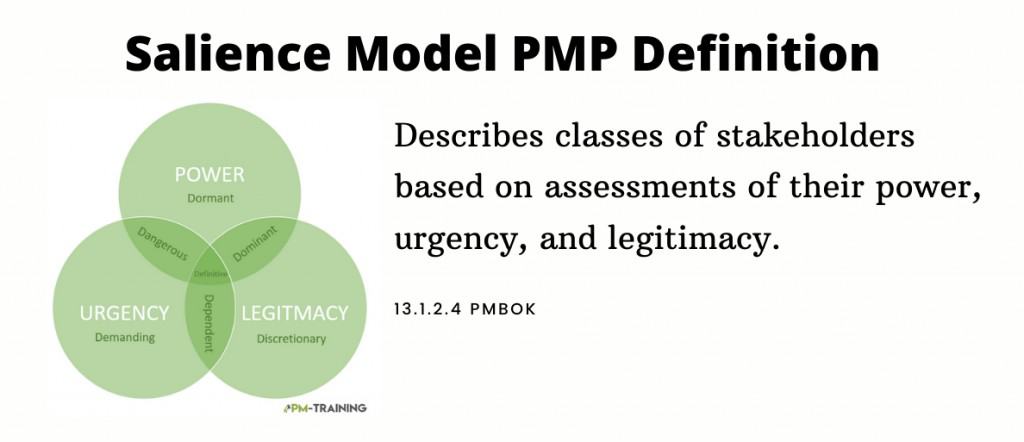
Salience model. Describes classes of stakeholders based on assessments of their power (level of authority or ability to influence the outcomes of the project), urgency (need for immediate attention, either time-constrained or relating to the stakeholders’ high stake in the outcome), and legitimacy (their involvement is appropriate). There is an adaptation of the salience model that substitutes proximity for legitimacy (applying to the team and measuring their level of involvement with the work of the project). The salience model is useful for large complex communities of stakeholders or where there are complex networks of relationships within the community. It is also useful in determining the relative importance of the identified stakeholders.
PMBOK (13.1.2.4)
Project managers and team members can use the salience model to help them better understand their stakeholders. By understanding how a particular stakeholder is likely to prioritize information, project managers can better anticipate and manage potential conflicts.
This model can also be helpful in situations with a lot of uncertainty, as it can help clarify what might be the most important for a given stakeholder at a given time. It can be used at any time during the project lifecycle.
It is beneficial for identifying and managing conflicts and anticipating potential problems. It can also be helpful in times of uncertainty when more information is needed to decide.
When to Use the Salience Model
The salience model for project management helps understand how people prioritize tasks within a specific scenario. It can also be helpful in various situations, including managing stakeholder expectations or anticipating potential problems.
You could also use it to help others understand why certain decisions are being made. Expertise with this model could help you prevent conflicts and resolve any issues.
The salience model can be used throughout the project life cycle, and it is beneficial when there is a lot of uncertainty involved.
This model is a good tool for teachers and students to use to help them understand how they process information and prioritize specific tasks. It can also be helpful for parents who are trying to figure out what is most important to their child and why that might be the case. You could use the model to show how decisions are generally made or what might drive a specific behavior. You could also use it to see who might be more task-focused than others and why.
Salience Model Example
In the example, there are three people – Alice, Bob, and Chris – and three tasks – cooking dinner, taking a walk, and watching TV. For Alice, cooking dinner is the most salient task; it is relevant to her goal of feeding herself and her family. Walking is less applicable to her goal, but it is still essential. In this example, watching TV is unimportant to Alice’s goal.
For Bob, taking a walk is the most salient task; it is relevant to his goal of getting fresh air and enjoying nature. Watching TV is less relevant but still important in some sense while cooking dinner does not matter for his goal.
For Chris, cooking dinner is the most critical thing to do right now; it’s relevant to his goal of feeding himself and his family, while taking a walk and watching TV is not relevant.
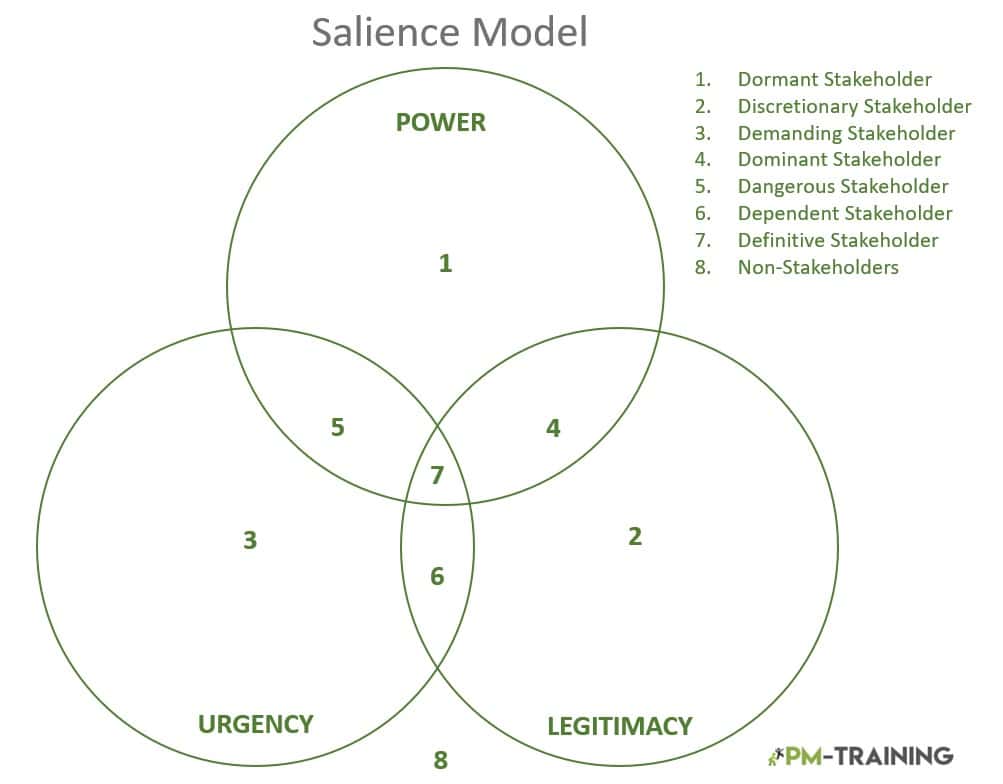
The salience model can help you understand what drives people to make decisions and prioritize different tasks at a given time. It could explain why someone might focus on a particular task or what properties make something the most relevant to them. This model is simple, but it can yield complex results if you use it well.
Salience Model Pros and Cons
One of the salience model’s key features is that it considers the individual’s current state of mind. For example, someone stressed out might focus on information relevant to their stressor, while someone feeling happy and carefree might focus on more trivial matters.
The stakeholder salience model can also help explain why people often act differently in different situations, such as why someone might be more focused at work than at home.
Salience Model Alternatives
Salience Model vs Stakeholder Cube
Several alternatives to the salience model exist, each with its own benefits and drawbacks. One such alternative is the Stakeholder Cube, a more complex model considering a stakeholder’s power and interest in a project.
The Stakeholder Cube (free template) can be useful for understanding how to manage different stakeholders. However, it is more complicated than the salience model and might require more time to use effectively.
The Stakeholder Cube is a tool for visualizing stakeholder interactions. It has six dimensions, four of which are power, interest, urgency, communication, negative impact, and positive impact.
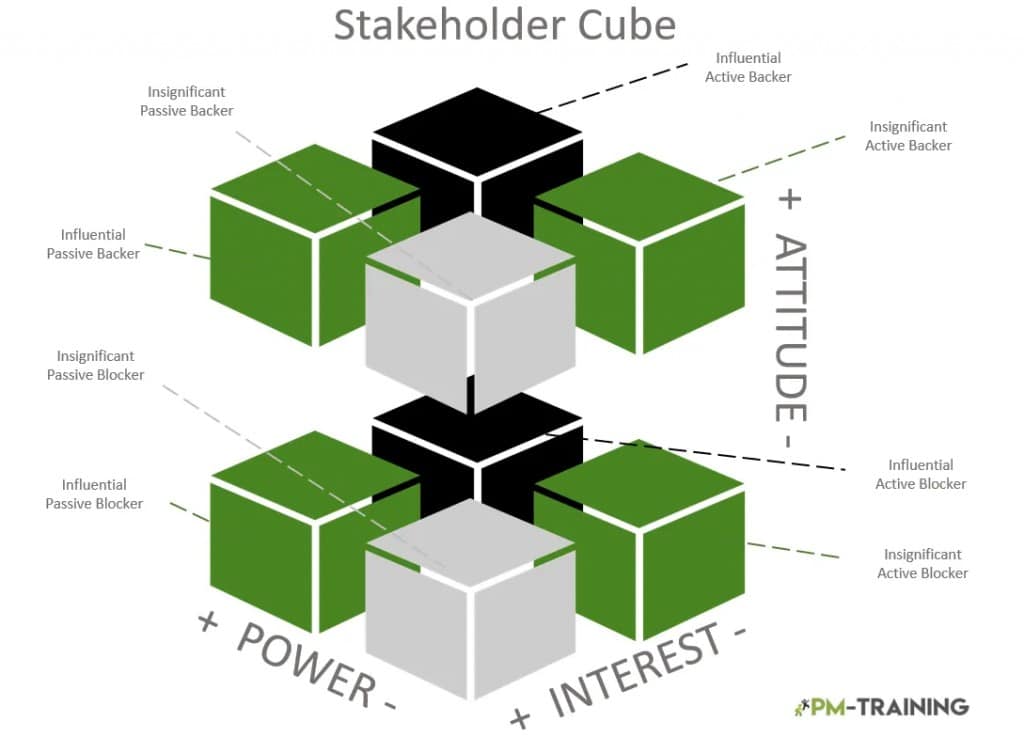
>> More info on Stakeholder Cube Template & Examples
Salience Model vs Power Interest Grid
Another alternative to the salience model is the Power-Interest Grid, a matrix that helps you understand how stakeholders relate to each other. This model can be helpful for understanding who has power over whom and what stakeholders are interested in.
The salience model is not nearly as complex as the Power-Interest Grid, but some people might prefer it because of its simplicity.
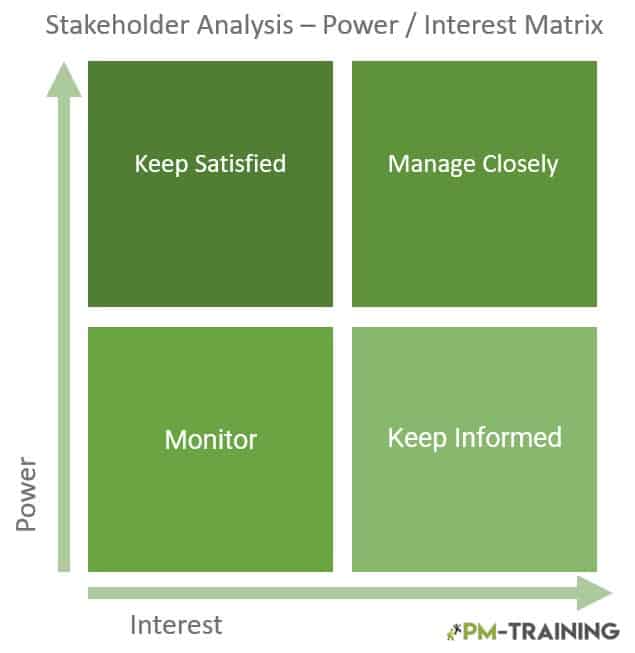
However, the best model for a project is the salience model because it takes the least amount of time to use and is easy to understand. It can help you prioritize tasks and manage stakeholders effectively. The salience model is a tool that can be used in many different situations, and it is likely to become more popular in the future.
FAQs
What does stakeholder salience mean?
Stakeholder salience is the importance of a task to a stakeholder. The salience model helps you understand and manage stakeholders by determining which tasks they will prioritize.
What are the three main attributes of stakeholders in the salience model?
The three main attributes of stakeholders in the salience model are power, legitimacy, and urgency. These attributes help you understand how a stakeholder relates to a project.
What is legitimacy in the salience model?
Legitimacy is the belief that a stakeholder has the right to decide on a project. The salience model helps you understand how to work with stakeholders and resolve any conflicts that might arise.
What is the purpose of salience?
The purpose of salience is to help you understand which priorities stakeholders care about and how they might react. The salience model can help prevent conflicts and ensure that a project is developed as quickly and efficiently as possible.
Shane Drumm, holding certifications in PMP®, PMI-ACP®, CSM, and LPM, is the author behind numerous articles featured here. Hailing from County Cork, Ireland, his expertise lies in implementing Agile methodologies with geographically dispersed teams for software development projects. In his leisure, he dedicates time to web development and Ironman triathlon training. Find out more about Shane on shanedrumm.com and please reach out and connect with Shane on LinkedIn.